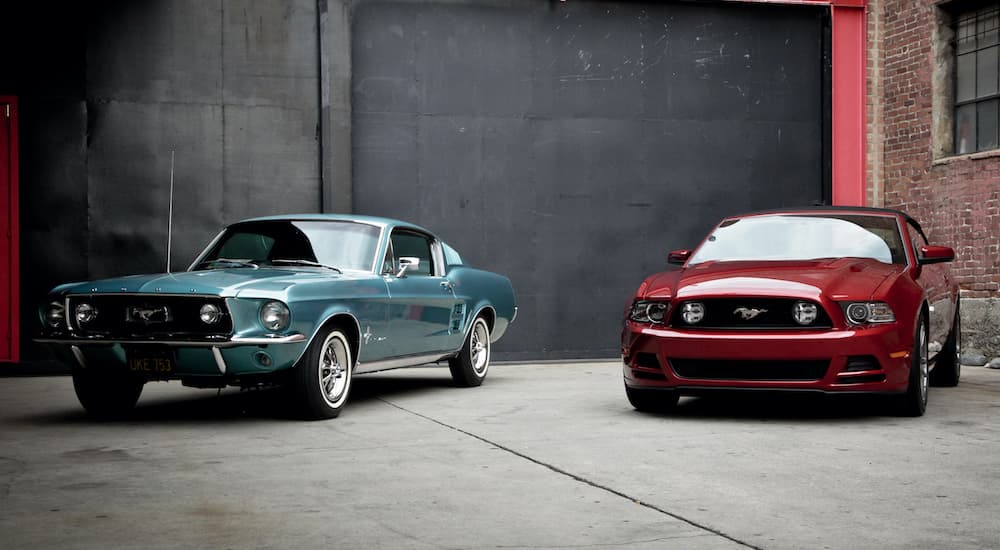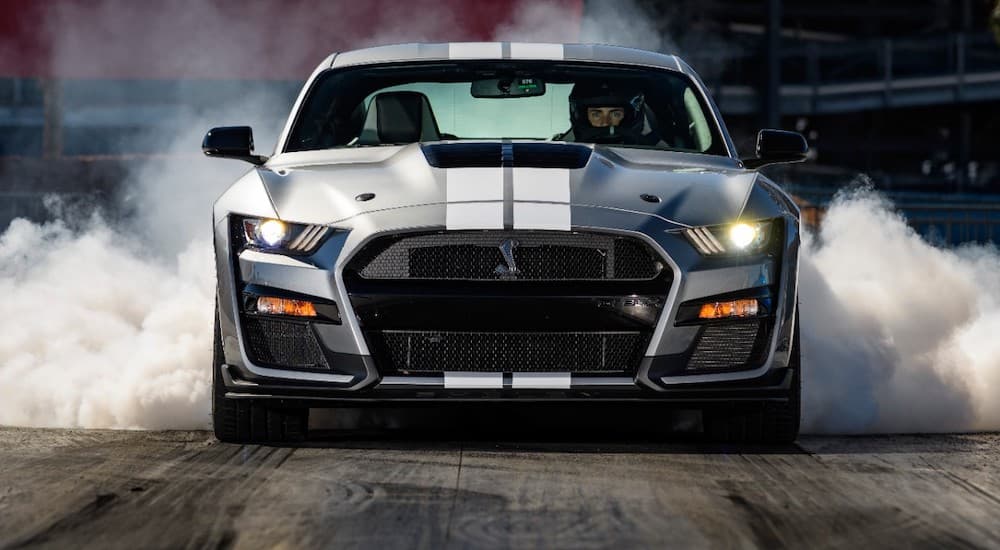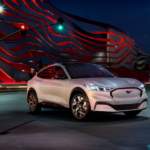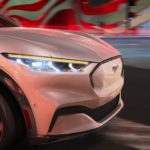Imagine this–it’s the year 1964, and a young enthusiastic fan of automobiles is reading through the hot new releases in their favorite magazine when they come across the beautiful Ford Mustang. Fast forward to the 1990s, another young enthusiastic fan of automobiles is perusing catalogs and stumbles across their dream car, the Ford Mustang. Now, fast forward to the 2020s, and there’s an entirely new generation of Mustang fans exploring its specs and gawking over its design on the internet. The moral of the story is it’s never too late to get yourself a Ford Mustang. After reading, you should take this knowledge to a used Ford dealer and explore the vast catalog on offer.
Why was the Mustang so beloved? More importantly, why is it still beloved? Aside from an immediately familiar design that makes you go “Hey! That’s a Mustang!” the Mustang has been a staple in Ford’s lineup for nearly 60 years because it’s a powerhouse. As one of Ford’s most influential vehicles, the Mustang has also received numerous changes throughout the years, more so than many other Ford vehicles.
When you’re shopping for a used Mustang, you’ll have no shortage of choices since many variations exist–you can even purchase a twenty-year-old Mustang, and you’ll still be flying down the road. Let’s talk about some of the largest advancements made throughout the Mustang’s tenure on the market. Of course, you can’t discuss the Mustang without mentioning the mighty Coyote engine, which couldn’t have arrived at a more perfect time in the Mustang’s life. Let’s first talk about the early days of the Mustang and how it initially grew to be what it later became, a legendary sports car–a vehicle many consider their dream car.
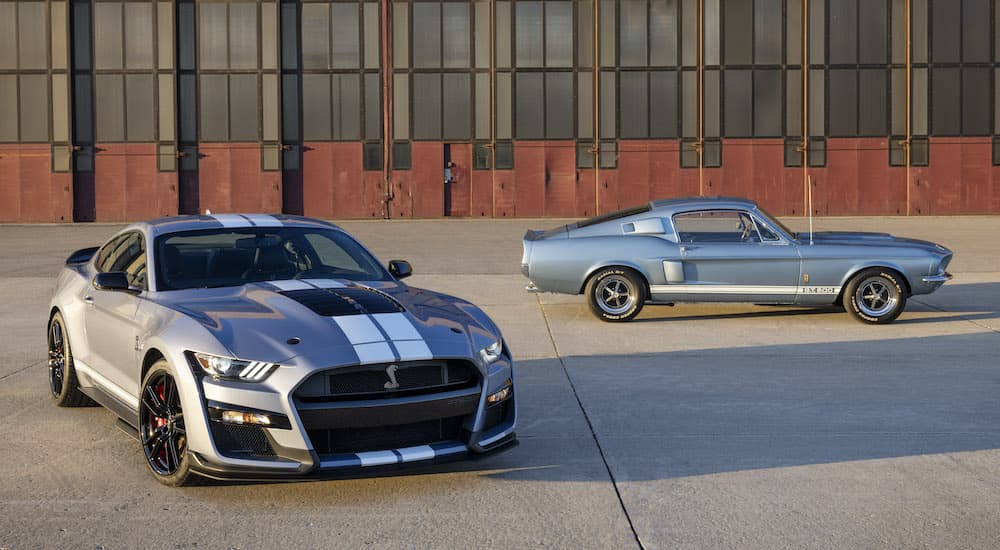
Humble Yet Strong Beginnings
The beginning of the Mustang’s story is important to know. The mid-engine 1962 Mustang I concept was the foundation of what we know today, but it wasn’t until 1964 that the front-engine Mustang reached the market. Near instantaneously, the Mustang found fandom with its muscle-car style design and a powerful engine under the hood. Only one year later, the Shelby GT350 was released with a V8 engine capable of pumping out 306 hp. Mind you, this was in 1965, and an engine of this caliber was something to gawk at. Ultimately, this could easily be considered the beginning of the consumer thrill-seeker era.
Two more years after the Shelby GT350 was released, the Shelby GT500 entered the scene in 1967. For the first time, the size of the engine was increased to a large 428 cubic inch V8 which increased the specs to 355 hp with a 0-60 mph travel time of 6.5 seconds. Another year later, in 1968, the standard Mustang received its own 428 cubic inch V8 capable of running 335 hp. That’s right, 335 hp, in 1968, isn’t that incredible? Closing out the 1960s saw the release of the Mach 1 and Boss 429, the latter of which provided 375 hp and could accelerate from 0-60 mph in only 5.3 seconds. Overall, the 1960s was a busy decade for Ford and easily one of the most influential in the entire automotive industry.
Meet the Coyote
The Ford Mustang has seen countless iterations over the decades, but the vehicle would reach new heights in the 2000s. Because of emissions standards, the Mustang had seen a decline in performance during the 1970s and 1980s. By the mid-1990s, the 5.0L V8 engine the Mustang had used since 1968 was discontinued, and some consider this to be the dark ages of the Mustang’s existence. However, in 2011, Ford would introduce a new 5.0L V8 to the world, dubbed the “Coyote,” and it was most certainly a return to form. The Coyote is now on its third generation, but ultimately this means you can easily find a pre-owned Mustang from within the past decade with this engine installed.
With that said, our recommendation for those shopping for a pre-owned Mustang is to consider a model from 2011 onwards. The first generation Coyote, as seen in the 2011 Mustang, pumped out 412 hp and 390 lb-ft of torque through either a six-speed automatic or six-speed manual transmission. With this stark amount of power, the Coyote accomplished what it set out to do, making the Mustang an indisputable powerhouse.
The Coyote would get a generational leap in 2015, and it would appear in Mustang models for the next three years. This second-generation Coyote engine upped the ante with 435 hp and 400 lb-ft of torque. Best of all, this era of the Coyote now appears heavily in the used market because of its age, so you can find one at a great deal. However, this wasn’t the end of the Coyote engine–it’s still going strong and is still found under the hood of the 2022 Mustang GT. A modified version of the Coyote is also available in the Mustang Bullitt and Mustang Mach 1, providing a bit more power to go with the other upgrades in those special models.
Let’s say you wanted a newer Mustang, but still at a far lower cost than a brand new model. The 2018 Mustang and onwards offer the third-generation Coyote engine, and this time around, the performance has increased once again. The third-generation Coyote engine adds direct injection to produce 460 hp and 420 lb-ft of torque, which is the most a 5.0L V8 engine has ever accomplished on the Mustang. Since the Coyote’s inception, it has received an 11.7% increase in horsepower and a 7.7% increase in torque. There are three generations of the Coyote to select from, and it all started in 2011. Keep this in mind if you’re shopping for a pre-owned Mustang, because enthusiasts will likely tell you a 5.0L V8 is what makes the Mustang so recognizable.
Reaching New Highs
Although the Coyote sounds enough like a happy ending, Ford has never ceased to push the envelope further with its favorite sports car. Newer models of Mustangs such as the race-ready Shelby cars have gone above and beyond what any Ford engineer could have imagined back in 1964. Take the 2021 Mustang Shelby GT500, for example. This iteration boasts a 5.2L supercharged V8 engine that can produce 760 hp and 625 lb-ft of torque, utilizing a dual-clutch transmission for lightning-fast shifts. Ford’s Mustang name has even spread to the EV market with the Mustang Mach-E, which combines electric motors and batteries to provide Mustang-like performance in a larger package, with an exceptional range to boot. For example, the 2021 Mach-E GT can provide 480 hp and up to 634 lb-ft of torque, all while traveling 270 miles on a single charge.
The Mustang Mach-E is an example of how Ford intends to reach new heights with the Mustang, and half a century after the first model’s launch, Ford has undeniably created a juggernaut. This longevity in the market is a benefit to you because used Mustang models are plentiful. As we said, Mustang models hold their value, but as with any pre-owned vehicle, used models will be cheaper than the newer ones, and in some cases, a used Mustang may be cheaper than a brand new vehicle with lesser specs altogether. If a pre-owned Mustang sounds like a fantastic proposition, then go for it.
